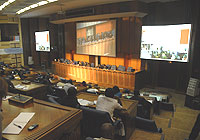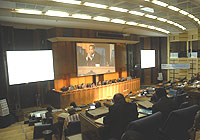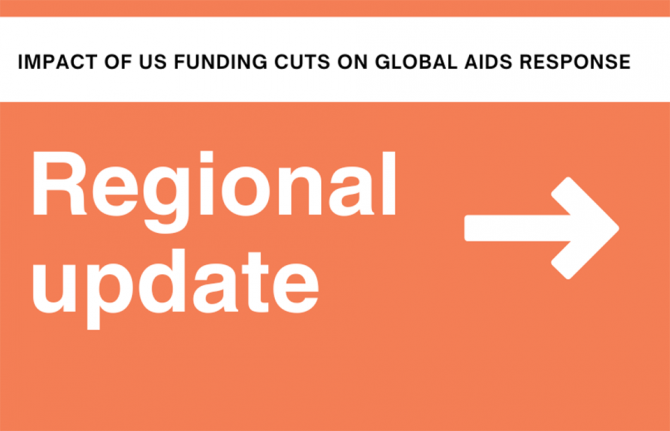
Feature Story
ICASA 2008: Collaborative TB and HIV activities essential
03 December 2008
03 December 2008 03 December 2008
A satellite symposium to highlight the impact that TB has on people living with HIV was held on 3 December 2008 during ICASA. Credit: UNAIDS/Mamadou Gomis
TB is among the leading causes of death in people living with HIV and accounts for an estimated 13% of AIDS deaths worldwide. HIV and TB are so closely connected that they are often referred to as co-epidemics or dual epidemics. Each worsens the impact of the other, yet despite evidence of positive impact of joint interventions, TB and HIV programmes have largely been implemented independently.
Sub-Saharan Africa carries the highest burden of HIV infections and AIDS related mortality in the world, accounting for more than 60% of people living with HIV worldwide. On average, 22% of TB patients in the Region are co-infected with HIV, and approximately 40% of TB deaths are due to HIV.
TB is the most common cause of illness and death among people living with HIV in Africa, despite being preventable and curable. Rising rates of drug resistant TB, especially extensively drug resistant tuberculosis (XDR-TB), further threaten the response to AIDS in the region.

Alasdair Reid, UNAIDS HIV/TB Adviser
Credit: UNAIDS/Mamadou Gomis
For these reasons, on Wednesday 3 December UNAIDS, WHO and WFP in collaboration with the TB/HIV working group of the Stop TB Partnership organized a satellite symposium to highlight the impact that TB has on people living with HIV and what needs to be done to reduce this unnecessary burden of illness and death.
The symposium underlined what needs to be done by HIV programmes and civil society to improve the prevention, diagnosis and treatment of TB in people living with HIV. It introduced the ‘Three I’s for HIV/TB’, a package of interventions - including Intensified TB case finding (TB screening), Isoniazid preventive therapy and Infection control - that aim to reduce the burden of TB among people living with HIV. Furthermore, the need to jointly address nutrition as an essential element in the response to TB and HIV was promoted. TB and HIV both compromise the nutritional status of affected persons, leading to malnutrition, which in turn aggravates the severity of HIV and TB.

Credit: UNAIDS/Mamadou Gomis
Few countries have comprehensive plans to reduce the burden of TB among people living with HIV in the region. The consequence is that the coverage with key TB and HIV interventions is still very low. Collaborative TB/HIV activities are essential to ensure that TB patients living with HIV are able to access HIV testing and treated appropriately, and to effectively prevent, diagnose and treat TB in people living with HIV.
In 2006, only 22% of TB patients were tested for HIV in sub-Saharan Africa, and less than 1% of people living with HIV were screened for TB disease.
The symposium demonstrated the need for rapid scale up to ensure universal access to TB prevention, diagnosis and treatment services for people living with HIV in Africa.
“The ICASA symposium has helped to enhance the engagement of HIV service providers and affected communities in the implementation of these crucial interventions and strengthen collaboration between TB programmes, HIV programmes and civil society,” said Alasdair Reid, UNAIDS HIV/TB Adviser.



